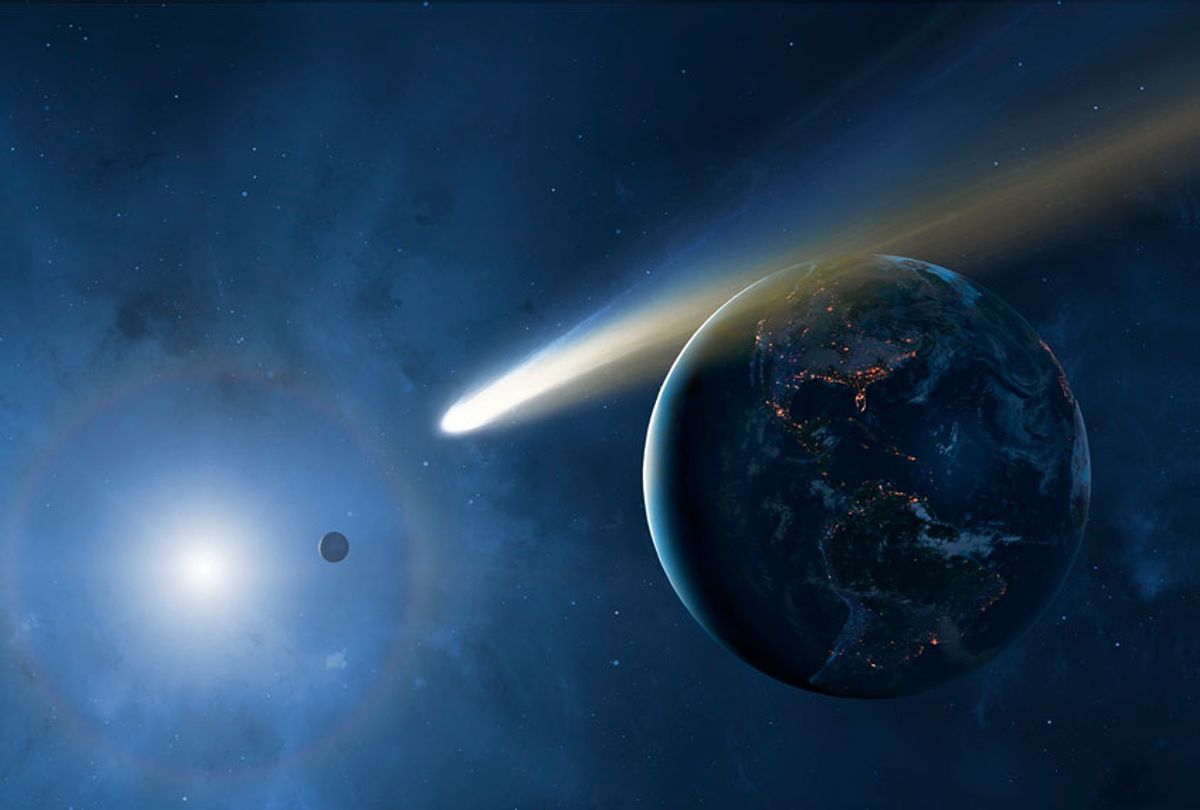Newly discovered comet arriving in 2024 could be brighter than Venus

At the end of last February astronomers spotted a brand new comet, dubbed C/2023 A3 (Tsuchinshan–ATLAS), which will dazzle Earth’s night sky in October 2024, with some predicting it will be as bright as many of stars or even the planet Venus.
Astronomical models suggest that C/2023 A3 orbits the Sun once every 80,660 years and has swooped out of the Oort Cloud, the interstellar fog of debris that extends beyond the influence of the sun’s magnetic field. It is believed that many space objects that enter our solar system originate from the Oort Cloud, which is a distance about 5,000 times the distance between Earth and the Sun.
C/2023 A3 is currently about 680 million miles (1.09 billion kilometers) from Earth and will make its nearest approach to the Sun, also called its perihelion, on Sept. 28, 2024. Its closest approach to Earth will occur Oct. 13, 2024, the day before Indigenous People’s Day.
When it does arrive, it is estimated the comet will shine at a brightness magnitude ranging from 0.7 to 0.2, which is pretty bright for a space object that isn’t a star or planet. The scale for brightness is reverse logarithmic, which means the brighter an object is, the lower its magnitude number. For reference, the brightest star in the sky (aside from the Sun) is Sirius at -1.46 and a full Moon is -13.
A lot of this depends on what the comet is made of and the exact path it takes. The closer it gets to the sun, the more it will melt. Comets are typically made of dust, rock and ice. When they get closer to a star like the one in our solar system, they start to dissolve, producing a long, beautiful tail, one of the features that distinguishes them from asteroids. As C/2023 A3 gets closer to the sun, not only will its brightness increase, it could reach a magnitude -5, which is on par with the planet Venus at magnitude -4.7.
There’s still a lot we don’t know about C/2023 A3, including its actual size and composition, but that will become more clear as it gets closer. It was first detected on Feb. 22 by the Asteroid Terrestrial-impact Last Alert System (ATLAS) telescope in South Africa, a NASA-funded project consisting of four telescopes: one in Chile, one in South Africa and two in Hawaii. While it’s ATLAS’ job to look out for planet-dooming asteroids, there’s no risk of C/2023 A3 crushing Earth.
After it was first noticed by ATLAS, the comet was then independently verified by astronomers at the Purple Mountain Observatory in Nanjing, Jiangsu, China. Tsuchinshan means Purple Mountain in Mandarin, which is why the comet’s full name is C/2023 A3 (Tsuchinshan–ATLAS).
Want more health and science stories in your inbox? Subscribe to Salon’s weekly newsletter The Vulgar Scientist.
This observatory, which was established in 1934, and is known as “the cradle of modern astronomy in China,” has found other comets in the past, including two in 1965: 60P/Tsuchinshan and 62P/Tsuchinshan, the latter of which will be close to Earth in December 2023. So you don’t actually have to wait until October 2024 to see a comet again, though 62P/Tsuchinshan will much harder to spot with the naked eye.
So while comets aren’t entirely a rare thing to see in the night sky, it will be especially spectacular, much more so than the green comet that swung by in late January and early February or C/2020 F3 (NEOWISE), which was visible for 113 days in 2020. Space is always giving us new reasons to bust out the telescope and look up.
Read more
about space

